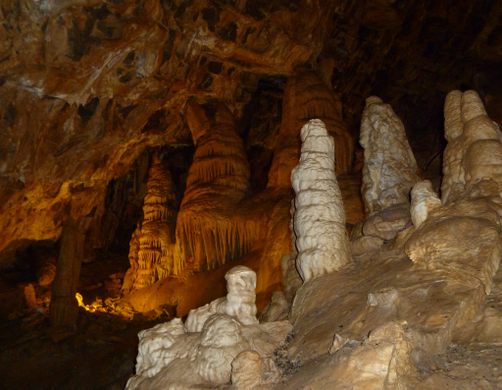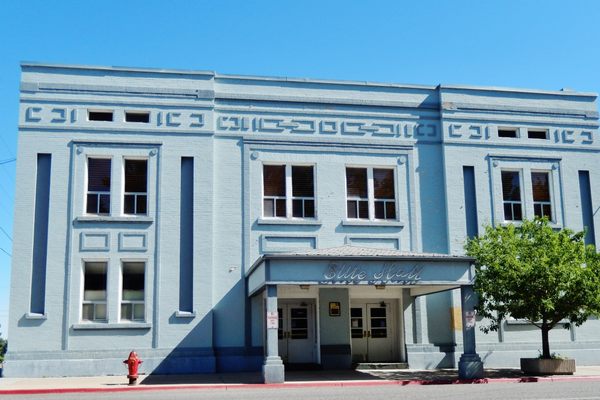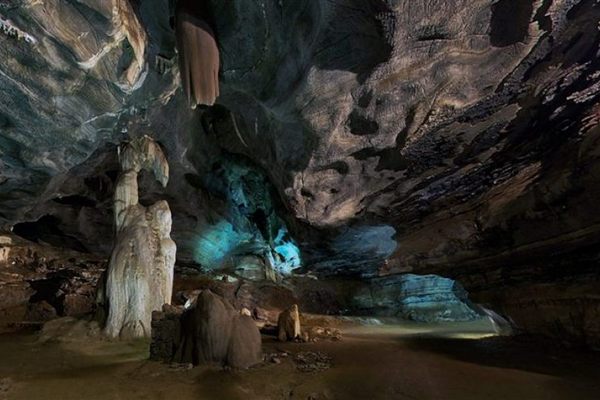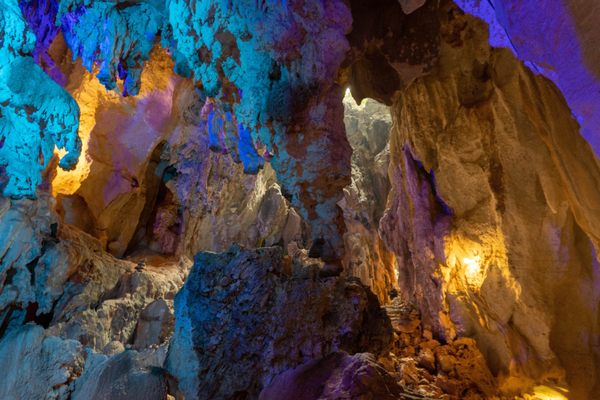AO Edited
Minnetonka Cave
Idaho’s largest, deepest limestone cave is known for its quirky rock formations and bat population.
In Idaho’s Cache National Forest, near the Utah border, lies one of the most geologically fascinating caves in the United States. Minnetonka Cave, the largest limestone cave in Idaho, is renowned for its unique rock formations and a maze-like structure created by ancient underground waterways (“Minnetonka” is a Native American word for “falling water”). The entire cave consists of nine chambers, connected across multiple levels, for which no natural exit has ever been found. Most famous, though, are Minnetonka’s many chambers, known by their nicknames inspired by oddly shaped stalactites and stalagmites.
In the “Devil’s Office,” shadowy columns and formations shaped by furniture are framed by an eerie red glow, while the “Dwarf Kingdom” contains delicate stalactites and stalagmites resemble the Seven Dwarfs, Kermit the Frog and Casper the Friendly Ghost, among other unlikely characters. You’ll also find the “Ballroom” (an expansive open room spanning 300 feet in length), “Wedding Room” (where rock formations look like a bride and groom, and organ pipes), as well as the “Treasure Room” (a chamber piled in long, rounded stalagmites resembling stacks of gold coins).
Developed in the 1930s as a show cave (a cave accessible to public spelunking), Minnetonka’s impressive infrastructure includes over 1,800 feet of illuminated trails, handrails and stairs (though Minnetonka is believed to be about 3,000 feet in total length). Over 40,000 spelunkers come to Bear Lake every year to explore its underground labyrinth on guided tours.
Geologists believe the cave originated as an ancient stream feeding into the nearby St. Charles Canyon. This helped to create the famously drippy stalactites and stalagmites, as well as other unique formations such as columns (where stalactites and stalagmites meet) and flowstone (sheets formed by cascading water and mineral deposits). This would also explain the many fossils of extinct aquatic life suspended in time along the cave walls.
Beyond its geologically significant formations, Minnetonka is also known to play a vital role in bat conservation. The cave is a major hibernation site for bats, including the big brown bat and Townsend’s big-eared bats. It is closed to visitors during the winter to protect these sensitive populations from being disturbed during their dormancy.
Know Before You Go
Guided tours are offered mid-June through Labor Day. The cave maintains 40-degree Fahrenheit temperatures year-round, so dress warmly.
Sponsored by the Visit Idaho. Click here to explore more

















Follow us on Twitter to get the latest on the world's hidden wonders.
Like us on Facebook to get the latest on the world's hidden wonders.
Follow us on Twitter Like us on Facebook